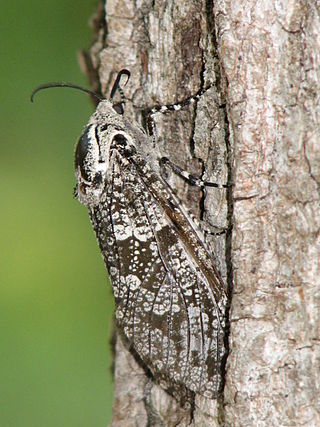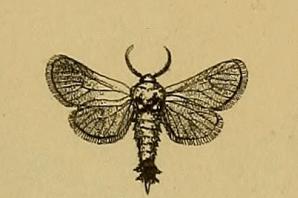
Bernard Lewis, was a British American historian specialized in Oriental studies. He was also known as a public intellectual and political commentator. Lewis was the Cleveland E. Dodge Professor Emeritus of Near Eastern Studies at Princeton University. Lewis's expertise was in the history of Islam and the interaction between Islam and the West.
This gallery of sovereign state flags shows the national or state flags of sovereign states that appear on the list of sovereign states. For flags of other entities, please see gallery of flags of dependent territories. Each flag is depicted as if the flagpole is positioned on the left of the flag, except for those of the Islamic Emirate of Afghanistan, Iran, Iraq, and Saudi Arabia, which are depicted with the hoist to the right.

West Asia, also called Western Asia or Southwest Asia, is the westernmost region of Asia. As defined by most academics, UN bodies and other institutions, the subregion consists of Anatolia, the Arabian Peninsula, Iran, Mesopotamia, the Armenian Highlands, the Levant, the island of Cyprus, the Sinai Peninsula, and the southern part of the Caucasus Region (Transcaucasia). The region is separated from Africa by the Isthmus of Suez in Egypt, and separated from Europe by the waterways of the Turkish Straits and the watershed of the Greater Caucasus. Central Asia lies to its northeast, while South Asia lies to its east. Twelve seas surround the region (clockwise): the Aegean Sea, the Sea of Marmara, the Black Sea, the Caspian Sea, the Persian Gulf, the Gulf of Oman, the Arabian Sea, the Gulf of Aden, the Red Sea, the Gulf of Aqaba, the Gulf of Suez, and the Mediterranean Sea. The area contains the vast majority of the similarly defined Middle East, but excluding most of Egypt and the northwestern part of Turkey, and including the southern part of the Caucasus.

Zakho, also spelled Zaxo is a city in the Kurdistan Region of Iraq, at the centre of the eponymous Zakho District of the Dohuk Governorate, located a few kilometers from the Iraq–Turkey border.

Major non-NATO ally (MNNA) is a designation given by the United States government to countries that have strategic working relationships with the U.S. Armed Forces while not being members of the North Atlantic Treaty Organization (NATO). While the status does not automatically constitute a mutual defense pact with the United States, it does confer a variety of military and financial advantages that are otherwise unobtainable by non-NATO countries. There are currently 19 major non-NATO allies across four continents: 11 in Asia, 3 in Africa, 3 in South America, and 2 in Oceania.
Armenians in the Middle East are mostly concentrated in Iran, Lebanon, Cyprus, Syria, Jordan, Saudi Arabia and Jerusalem, although well-established communities exist in Iraq, Egypt, Turkey and other countries of the area including, of course, Armenia itself. They tend to speak the western dialect of the Armenian language and the majority are adherents of the Armenian Apostolic Church, with smaller Catholic and Protestant minorities. There is a sizable Armenian population in the thousands in Israel. There is also the Armenian Quarter in Jerusalem with a history that goes back 2,000 years.

The Cossinae are the nominate subfamily of the Cossidae. The caterpillars of several Cossinae species, such as the carpenterworm and the goat moth, are significant pests. On the other hand, in Chile the caterpillars of the Chilean moth are collected on a commercial scale for sale as fishing bait and terrarium pet food; they are usually called "butterworms" in international trade.

The Arab world consists of 22 states. As of 2021, the combined population of all the Arab states was around 475 million people.

The European cat snake, also known as the Mediterranean cat snake, is a venomous colubrid snake endemic to the Mediterranean and Caucasus regions.

Christianity, which originated in the Middle East during the 1st century AD, is a significant minority religion within the region, characterized by the diversity of its beliefs and traditions, compared to Christianity in other parts of the Old World. Christians now make up approximately 5% of the Middle Eastern population, down from 13% in the early 20th century. Cyprus is the only Christian majority country in the Middle East, with Christians forming between 76% and 78% of the country's total population, most of them adhering to Eastern Orthodox Christianity. Lebanon has the second highest proportion of Christians in the Middle East, around 40%, predominantly Maronites. Egypt has the next largest proportion of Christians, at around 10% of its total population. Copts, numbering around 10 million, constitute the single largest Christian community in the Middle East.

Ethnic groups in the Middle East, in the 'transcontinental' region which is commonly a geopolitical term designating the intercontinental region comprising West Asia without the South Caucasus, and also comprising Egypt in North Africa. The region has historically been a crossroad of different cultures and languages. Since the 1960s, the changes in political and economic factors have significantly altered the ethnic composition of groups in the region. While some ethnic groups have been present in the region for millennia, others have arrived fairly recently through immigration. The largest socioethnic groups in the region are Arabs, Turks, Persians, Kurds, and Azerbaijanis but there are dozens of other ethnic groups that have hundreds of thousands, and sometimes millions of members.

Phragmataecia castaneae, the reed leopard or giant borer, is a moth of the family Cossidae. It was described by Jacob Hübner in 1790. It is found in central and southern Europe, the Middle East, the Caucasus, Transcaucasia, Turkmenistan, Kazakhstan, north-western Iran, Iraq, Syria, Sri Lanka, Madagascar, India, Lebanon, Turkey, western China, south-western Siberia, Egypt, Tunisia and Morocco.
Deserticossus arenicola is a species of moth of the family Cossidae. It is found in Russia (Dagestan), Armenia, Azerbaijan, Georgia, Turkmenistan, Kazakhstan, Uzbekistan, Kyrgyzstan, north-western China, Iran, Afghanistan, Pakistan, Egypt (Sinai) and Jordan.
Holcocerus gloriosus is a species of moth of the family Cossidae. It is found in Turkmenistan, Uzbekistan, southern Kazakhstan, Iran, Afghanistan, Iraq, Jordan, Israel, northern Egypt, Saudi Arabia, Bahrain and Oman. The habitat consists of deserts.

Parahypopta caestrum is a species of moth of the family Cossidae. It is found on the Iberian Peninsula and in France, Italy, Austria, the Czech Republic, Slovakia, Hungary, on the Balkan Peninsula, as well as in Jordan, Israel, Syria, Iraq, Turkey, south-western Russia and Kazakhstan.
Eremocossus vaulogeri is a species of moth of the family Cossidae. It is found in Senegal, Mauritania, Morocco, Algeria, Libya, Tunisia, Egypt, Jordan, Israel, Syria, Egypt, Oman, Yemen, the United Arab Emirates, Saudi Arabia, Iraq and southern Iran.

Stygioides colchica is a species of moth of the family Cossidae. It is found in Bulgaria, Greece, the southern part of European Russia, Ukraine, Turkey, Armenia, Lebanon and Israel.
Isoceras bipunctata is a species of moth of the family Cossidae. It is found in Georgia, Azerbaijan, Turkey, Iran, Lebanon, Jordan, Syria, Israel and Iraq.

Dyspessacossus is a genus of moths in the family Cossidae.
Dyspessacossus funkei is a moth in the family Cossidae. It is found in the Taurus Mountains in Turkey, as well as in Lebanon, Syria and Iran.












